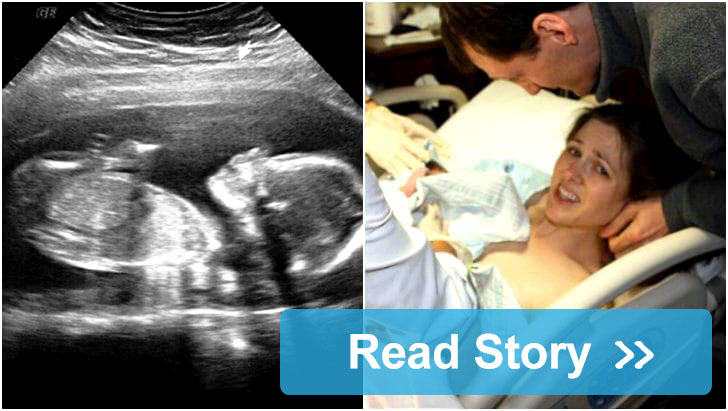
Ultrasound
A Nice Place to Call Home
Houston is the city in Texas with the largest population. 2.3 million people live in Houston, meaning that it is also one of the biggest cities in the United States of America. It is also the largest city in the US by area in total, and boasts a variety of parks and landmarks, as well as a sprawling downtown area and one of the most ethnically and religiously diverse populations in the US. Named after then-president Sam Houston, the city was incorporated in 1837, and has grown substantially from the piece of land that two brothers bought!

Houston Texas
Houston Had a Fascinating Beginning
John and Augustus Allen, two brothers, purchased the land that would become Houston from a widow in 1837. They named their new city after the president at the time, Sam Houston, and ran an advertisement for Houston in the Telegraph and Texas Register a few days after they purchased the land. They were able to make Houston the capital of Texas temporarily by building a capital building for the government.

An Old Photo Of Downtown Houston
A Lengthy Struggle
Lauren and David Perkins had been trying to conceive for a year and a half to no avail. They had seen different specialists and doctors, who were unable to find any concrete cause for the couple’s fertility issues. Lauren was a keen runner, and it was theorized that this hobby had somehow stopped her cycle, causing her to be unable to conceive. This was not known to be the case, however, and the Perkins couple did not have any breakthroughs until they went away on a trip with friends to Nicaragua.

Houston Marathon Runners
Running Can Be an Obstacle to Fertility
Unfortunately, and while this is not necessarily the case for Lauren, running can cause fertility problems in women. Research from the American College of Sports Medicine has found that up to 44% of women who exercise regularly see their menstrual cycle change or stop entirely. This is something that female athletes may not address, as they can assume that they are in good health as a result of their lifestyle. However, this assumption can be dangerous.

A Woman Running
What Causes These Issues?
When such fertility issues are seen, current research seems to suggest that it is due to a deficiency in caloric intake when compared to energy expenditure. Essentially, the women experiencing such changes to their cycle are not eating enough food to replenish the energy that they expend due to exercise, and their body responds by neglecting reproductive functioning in favour of maintaining proper energy levels. While this can cause infertility and bone problems, it is fortunately also reversible.

A Female Football Player
How to Address Exercise-related Fertility Problems
If a woman is experiencing fertility issues as a result of physical activity, they tend to abate when the menstrual cycle resumes. Current research suggests that, in order to maintain a healthy energy level, athletes should be consuming a diet that consists of a mixture of fat, carbohydrates and protein, and a sufficient number of calories as well as water in order to sustain energy production throughout the day, including during intense exercise.

Balanced Meal
10% of Women Struggle to Conceive
Lauren and David Perkins were certainly not unique in their experience of fertility challenges. According to the US Center for Disease Control, as many as 10% of women struggle to conceive or stay pregnant between the ages of 15-44. Infertility is generally defined as being unable to conceive after a year of trying, or after 6 months if the woman is aged 35 or older. Infertility is often perceived as a woman’s problem- however, only 1/3 of cases of infertility are due to the woman herself being unable to conceive.

10% Of Women Struggle To Conceive
There Can Be Many Causes of Infertility
A further 1/3 of cases of infertility are caused by the man being unable to conceive, and 1/3 are caused by a mixture of problems between both partners, or the cause being unknown. Lifestyle factors can affect the fertility of both men and women, such as stress, poor diet and drug use. Age is also a relatively common cause of fertility issues, with more couples waiting until they are in their 30s or 40s to try to conceive.
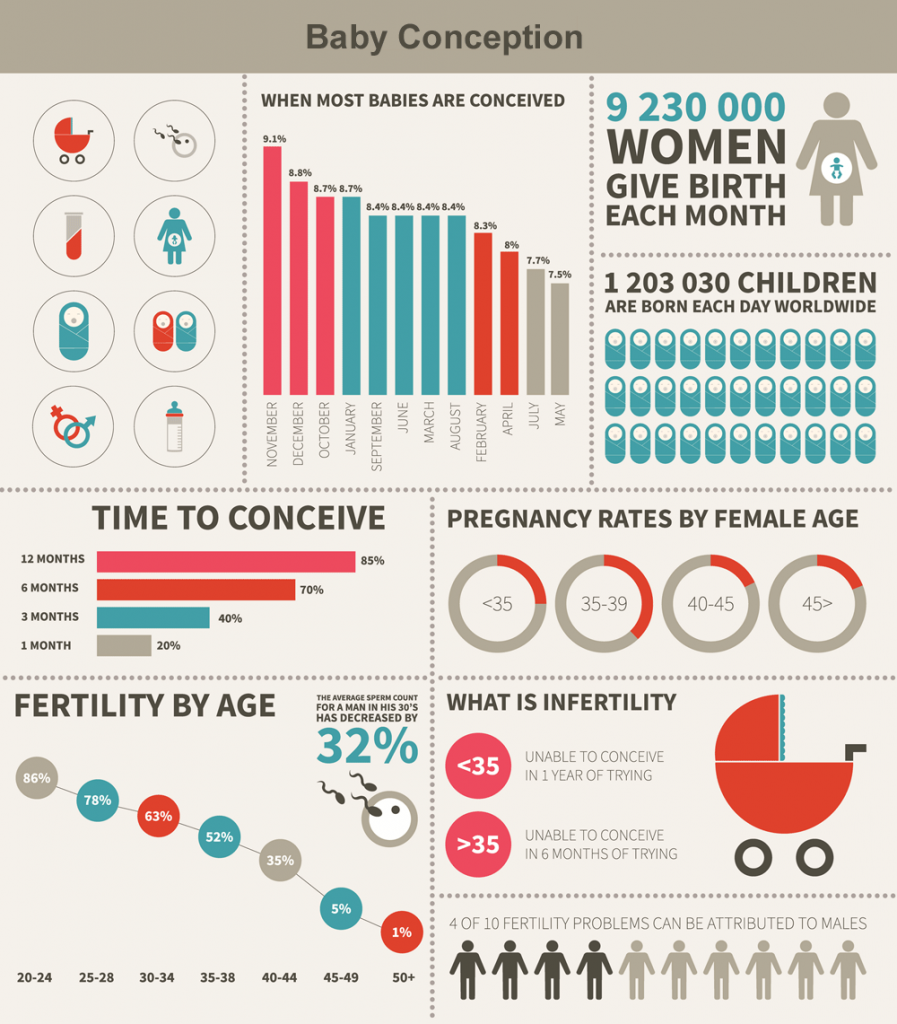
Infertility Infographic
Back and Forth
Lauren has described her experience of being overwhelmed by medical advice from doctors, despite them not knowing the root cause of her fertility issues. She was offered medical intervention from one doctor, and rejected that, wanting instead to know why she was struggling to fall pregnant. Frustrated, she saw another doctor, who offered her the same resolution in the form of treatment without any real answers. Lauren and her husband, David, decided to give the fertility consulting a break until they returned home from a planned mission trip to Nicaragua.
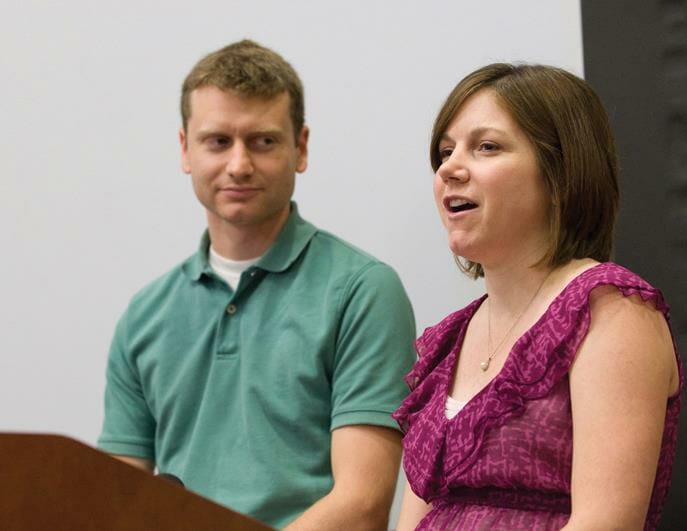
David And Lauren Perkins Delivering A Talk
Religion in the USA
Religion is an important part of life for many Americans, like it was for Lauren and David Perkins. More than 70% of the population describe themselves as Christians, and freedom of religion is guaranteed by the Constitution. Many different denominations of Christianity are represented amongst the US population, while other faiths like Judaism, Islam and Hinduism are also present and growing due to factors like migration and conversion. Many American Christians also take part in mission trips, like the Perkins couple did to Nicaragua.

A Church In America
Comfort in Friends
David and Lauren went to Nicaragua on a mission trip, with friends from their church group; religion was an important part of their lives. Disappointed and resigned to not having children, Lauren spoke at length to her friends of her frustration with her fertility struggles, when asked to discuss a personal problem she was facing during a morning devotional. Little did she know that her story would be relayed to a local priest, and that that priest would call upon her congregation to pray for the couple later that evening during her service.

Part Of The Nicaraguan Coastline
What is a Missionary?
A missionary is generally a member of a Christian religious group, who travels to different countries to spread the word of their faith to local populations. Missionaries can be found all around the world, but their efforts tend to focus especially on countries that are impoverished or less developed than Western countries. Some Christian missionaries feel it is part of their religious duty, as the Bible states that Jesus commanded his followers to make disciples of every nation.
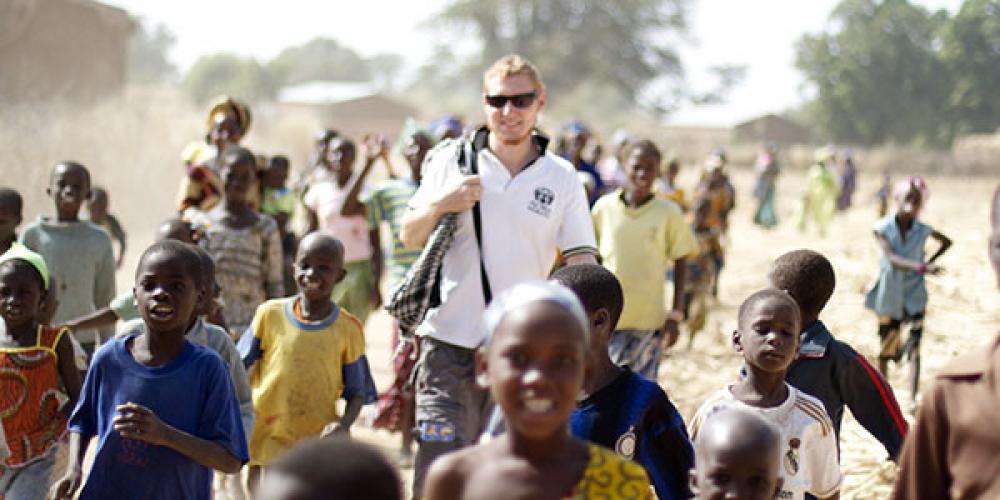
A Western Missionary In Africa
What Do Missionaries Do?
Many major nations both send and receive missionaries from other countries. Missionaries generally travel to other countries than their own in order to spread the word of their religion. However, some missionaries also consider media as a form of mission, and print books or broadcast on the radio or internet as a way of reaching out to people. Missionaries tend to perform voluntary work as part of their trips, as well as other types of outreach with the communities they are living among during their mission.

A Western Missionary In Thailand
A Problem Shared Is a Problem Halved
To their surprise, during the service at the local church that evening, the pastor called upon some of the Texan missions to come to the front of the building, to be prayed for by the congregation. It wasn’t until she asked specifically for ‘Lorena y David’ that the Perkins realized she was talking about them! They went to the front of the building, where they were prayed for by the congregation in order for God to help resolve their fertility issues.

A Church In Rural Nicaragua
Nicaragua is an Interesting Country
Nicaragua is a country in Central America with a dramatic landscape and past. The country was colonized by the Spanish in the 1600s, having been inhabited since ancient times by its indigenous peoples. However, the Mosquito Coast was colonized by the English, and this mixture of cultures has meant Nicaragua has developed a unique blend of traditions in folklore over the years. It contains many lakes and volcanoes, and also contains the second-largest rainforest in all the Americas.

Nicaraguan Scenery
Religion in Nicaragua
While there is no official or state religion in Nicaragua, it is an important part of local culture and life. Traditionally, the majority of the population are Roman Catholic, with other Christian denominations and sects also being represented among the population. Worship of saints in particular is a dominant part of Nicaraguan Christianity in general, and patron saints of various locales and communities are generally thought of as being conduits between the people and God.

Catholic Church In Nicaragua
An Epiphany in Paradise?
The following day, as they were preparing to leave the village, the priest pulled Lauren aside, telling her she felt God had big things in store for her. They were unsure what this meant, but had already resolved to try IUI treatment, also know as artificial insemination, when they returned home to Houston- something they had yet to attempt. David and Lauren were not hugely optimistic about the process, but felt they had nothing to lose in trying it.

The Landscape Of Rural Nicaragua
Not Failsafe
IUI treatment has been used for decades to help couples with fertility issues to conceive. While it can and is successful for some couples, it can be a frustrating and lengthy process, with the costs and time invested being a real challenge for many couples. It is worth considering that the success rate per cycle for couples going through IUI treatment is roughly 20%- no wonder David and Lauren didn’t expect it to work for them.
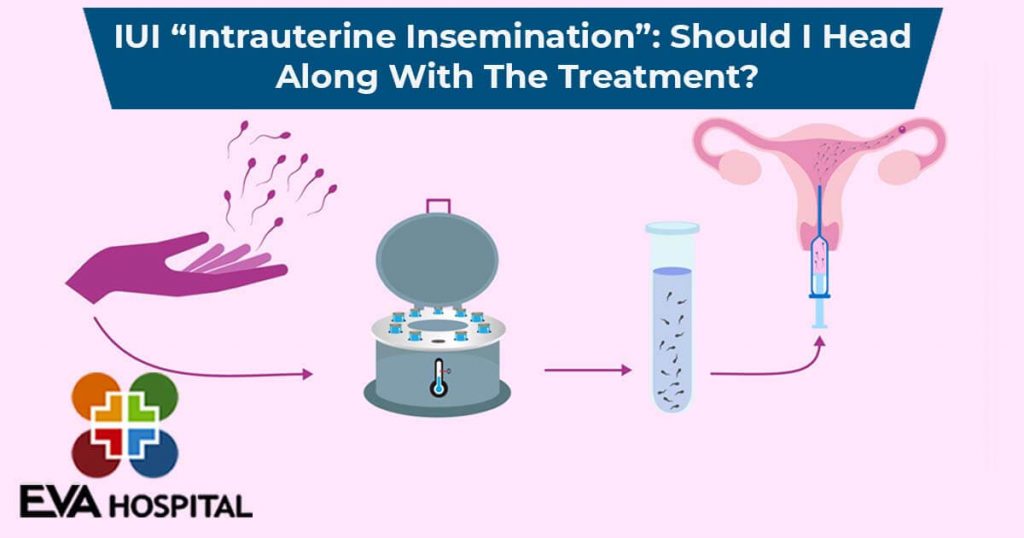
A Diagram Depicting The IUI Process
An Unlikely Solution?
When they returned home, David and Lauren began the process of IUI treatment, despite not expecting it to be successful, and feeling they would eventually need to try other methods of conceiving. According to David, the process took approximately two weeks for the couple, and had a 25% chance of success, with a 25% of conceiving twins if the conception was successful. However, despite the tough odds, Lauren successfully fell pregnant!

A Depiction Of Fertility Treatment In Action
A Surprise Was Just Around the Corner – The Ultrasound
When David and Lauren went to the clinic to have Lauren’s checkup and ultrasound, Lauren was informed that her results indicated that her HCG levels were very high. This can indicate a variety of different complications during pregnancy, such as a placental tumor or molar pregnancy. On a lighter note, elevated HCG levels in the mother can indicate multiple pregnancies. This was the case for Lauren, who was informed that she was not only pregnant, but likely having twins! These ultrasound scan are suprprising.
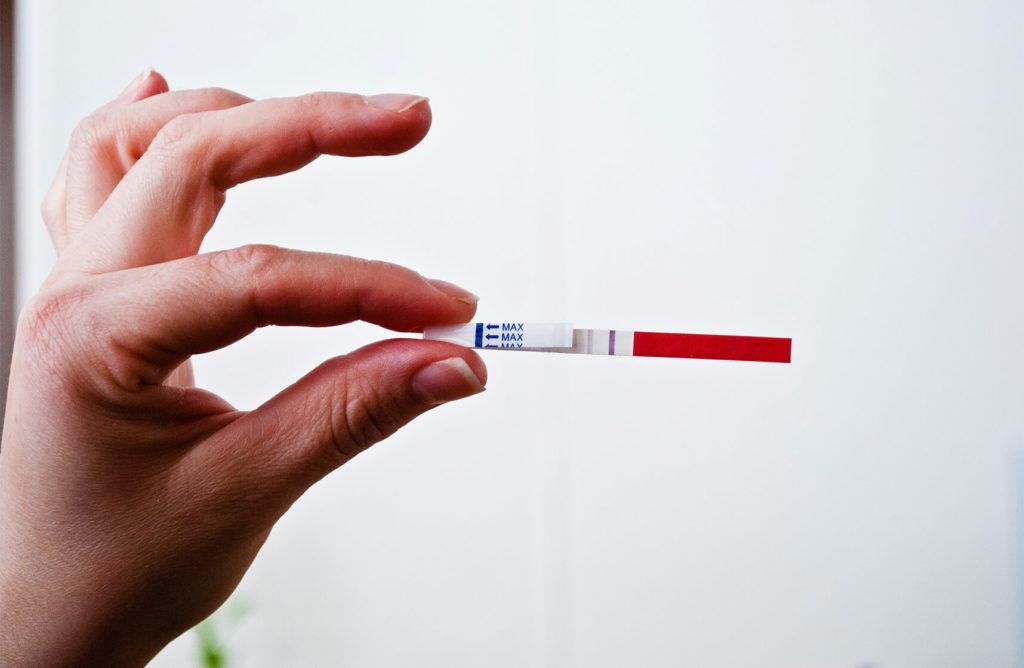
A Test Showing Elevated Hcg Levels
Two’s a Party…
Lauren and David were thrilled by this news. They had intended to have a second child after their first was born, and, after over a year of trying, felt blessed to hear that they would be having twins. Lauren then had her ultrasound, so the doctor could confirm that she was, in fact, carrying two babies at the same time. The results of the medical ultrasound ended up being even more surprising than the realization that Lauren was having twins…
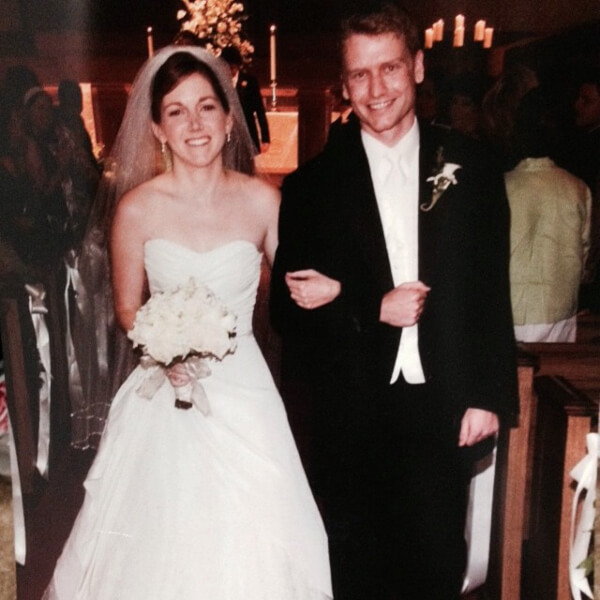
Lauren And David At Their Wedding
Multiple Pregnancies Are More Common During Fertility Treatment
Statistically, women who have fertility treatment like IVF or IUF are more likely to experience multiple pregnancies than women who conceive without such methods. However, this is often due to implanting multiple embryos in the womb simultaneously, as opposed to the processes being inherently more likely to result in multiple pregnancies than conceiving through other methods. Nonetheless, women who conceive through treatments like IUF and IVF are generally more likely to have multiple pregnancies than the general population.
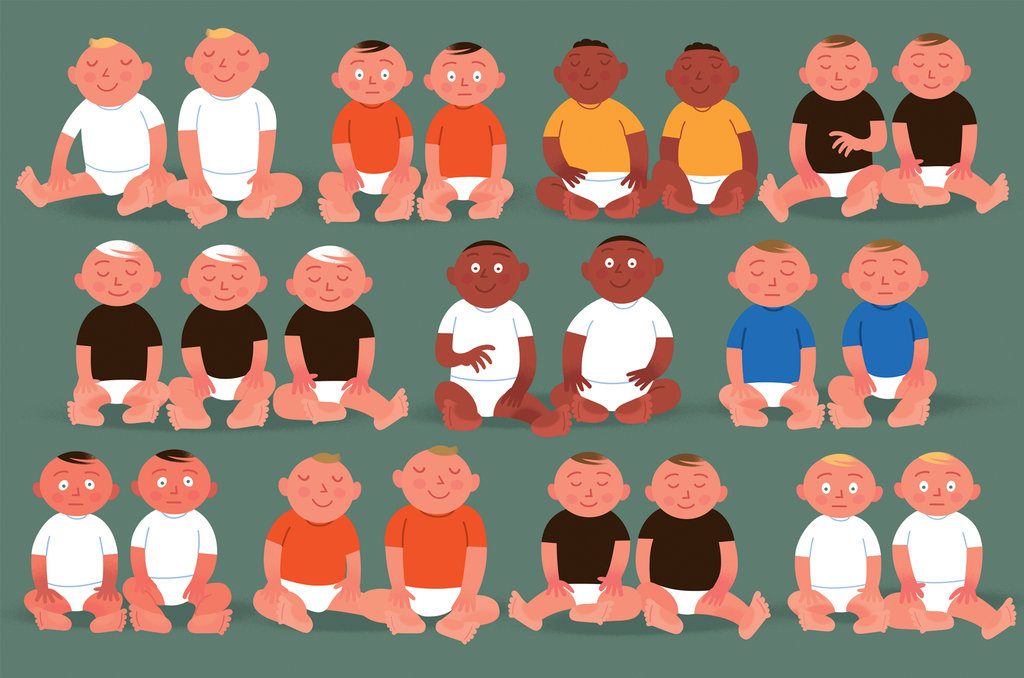
A Graphic Depicting Twins
Ultrasound Procedure – The More, the Merrier
Lauren Perkins’ doctor then conducted her ultrasound procedure, expecting to find that she was carrying twins. He quickly fell quiet, and then informed Lauren that she was not pregnant with twins, but that he could actually find five pregnancies with the ultrasound machine! This was obviously an incredible shock for the couple who had been told that IUI treatment yielded a 25% success rate, and that the likelihood of twins was roughly 25% in a successful pregnancy through IUI, let alone quintuplets.

An Ultrasound Being Conducted
The More-er, the Merrier-er?
Despite being shocking enough, this was not even the end of the Perkins’ revelations. Upon further inspection, the doctor realized that he could find a sixth pregnancy, and that Lauren was actually carrying sextuplets. Such a pregnancy is exceptionally unusual, occurring in less than 1% of IUI pregnancies. At this time, after that ultrasound, Lauren and David were given a decision to make; Lauren could try to carry all the babies to term, or end some of the pregnancies early in order to reduce the risk of complications in the others.
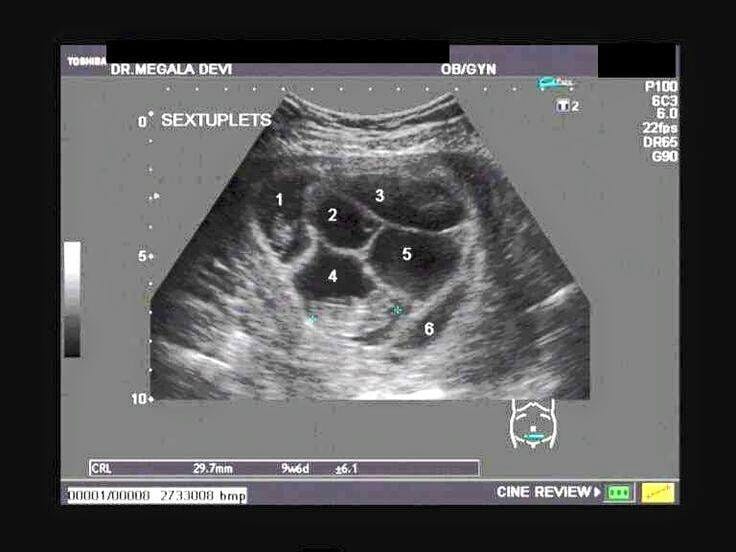
The Ultrasound Of The Perkins Sextuplets
Multiple Pregnancies Can Be Risky
Carrying multiple pregnancies can result in a variety of complications for both the mother and the baby. Premature birth is perhaps the most common complication, which means lower birth weights for the newborns and a higher risk of birth defects. Other complications can include gestational high blood pressure in the mother, gestational diabetes, anemia, miscarriage, and even possibly twin-to-twin transfusion syndrome, which can occur in identical twins sharing a placenta and wherein one twin receives far more blood than the other.
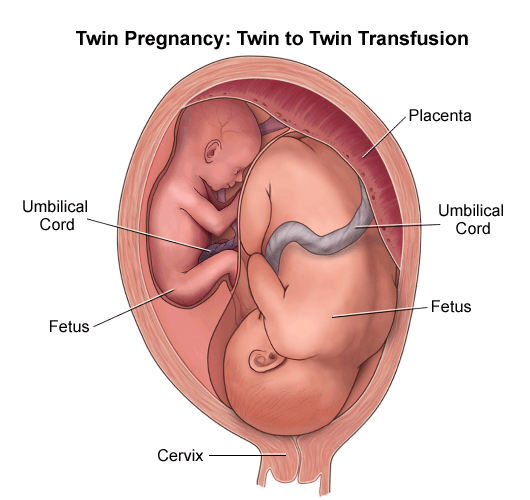
Twin To Twin Transfusion
Not an Option
Despite the risk of complications in a pregnancy like Lauren’s, neither she nor David felt that ending some of the pregnancies early, in a procedure called ‘Selective Reduction,’ was a viable option. Speaking about their decision, Lauren said “seeing your six babies and seeing there’s a heartbeat and there’s no sign of any problems, so you know, how do you choose?” Once the Perkins decided that Lauren would not go through with selective reduction, she had the full support of her medical team behind her.

Laura Perkins Selfie
A Goal In Sight
When Lauren informed her doctors that she intended to try to carry all the pregnancies to term, he was surprised, but determined, and promised to do everything he could to help them get to 28 weeks. Lauren and David’s community and family stepped up during the pregnancy to help them as much as possible, which the couple have said was invaluable in helping them get through the process and subsequent delivery.
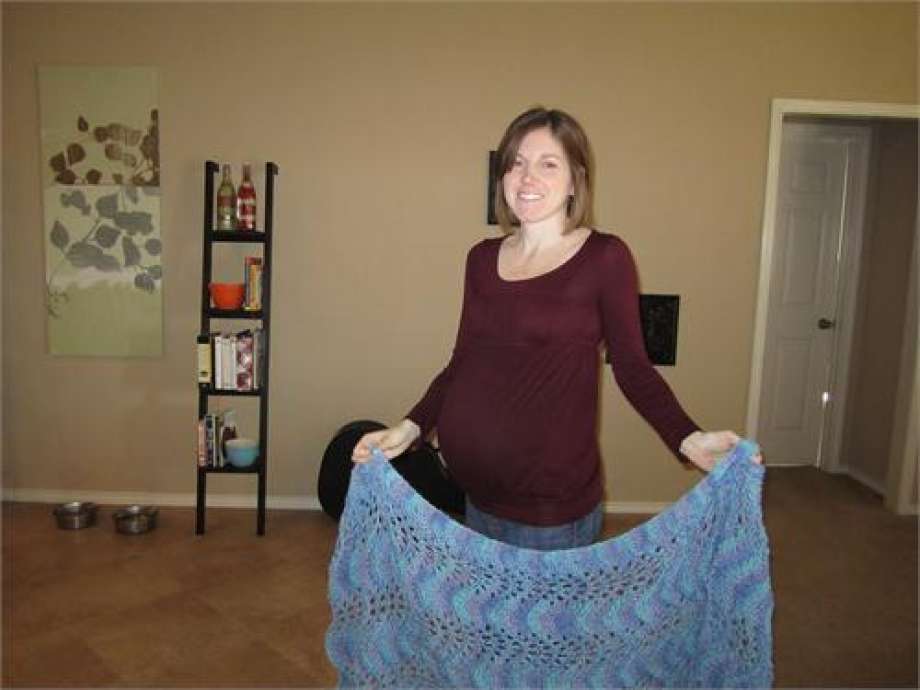
Lauren Towards The End Of Her Pregnancy
A Tiring Period
From the very beginning, Lauren knew that her delivery would be premature, and that her newborns would need to be placed straight into the NICU, as there were just too many to carry to term. She then had to do everything she could to prolong her pregnancy. She had a cerclage placed at 14 weeks, and left her work at 17 weeks pregnant. Despite usually being an active person, Lauren was so tired that, during her pregnancy, she spent most of her time sleeping and resting.
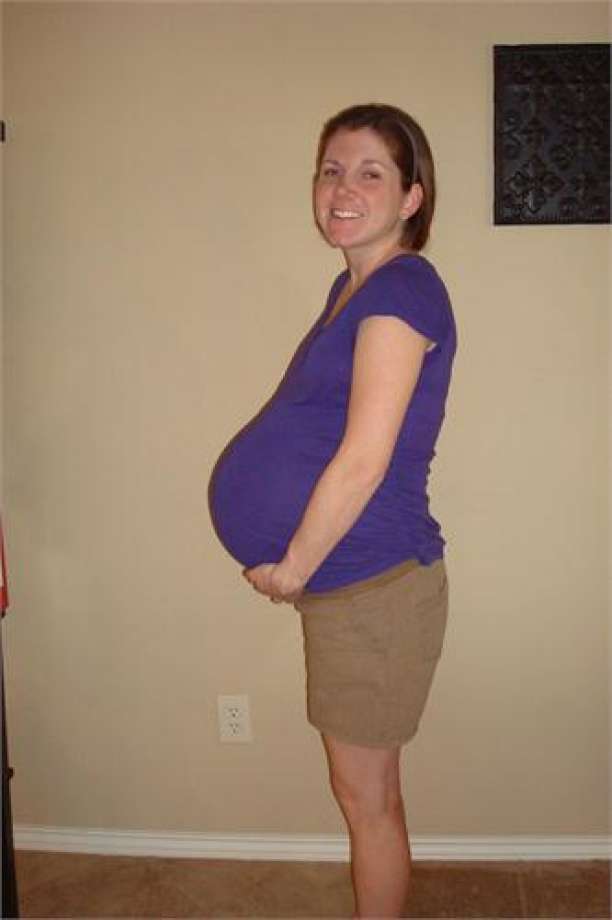
Lauren Perkins During Her Pregnancy
A Bump in the Road
Despite some uncomfortable symptoms towards the end of her pregnancy, like rashes and tiredness, Lauren made it to 28 weeks without any significant complications. However, by week 29, doctors discovered that Lauren’s blood pressure was abnormal, and that one of the babies was not doing well. Lauren was immediately admitted to the hospital after this appointment, and kept stable over the weekend, when she made it to 30 weeks.
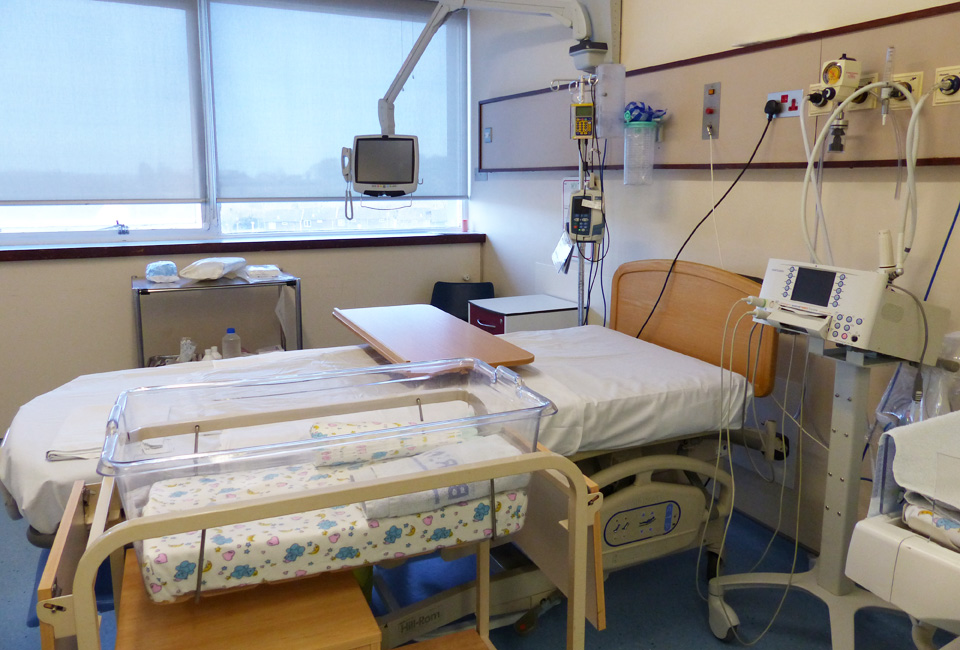
A Hospital Bed
The Big Day Arrives
At 30 weeks pregnant, and with 35 staff gathered in the delivery room to assist in the process, Lauren delivered all 6 of her babies within 4 minutes by Cesarean Section. Lauren and David named their children Andrew Noah, Caroline Grace, Benjamin Luke, Levi Thomas, Leah Michelle, and Allison Kate. All were born weighing between 1-2 lbs. Lauren and David describe the shock of having six new children setting in during this period, but that the delivery was very quick and uncomplicated.
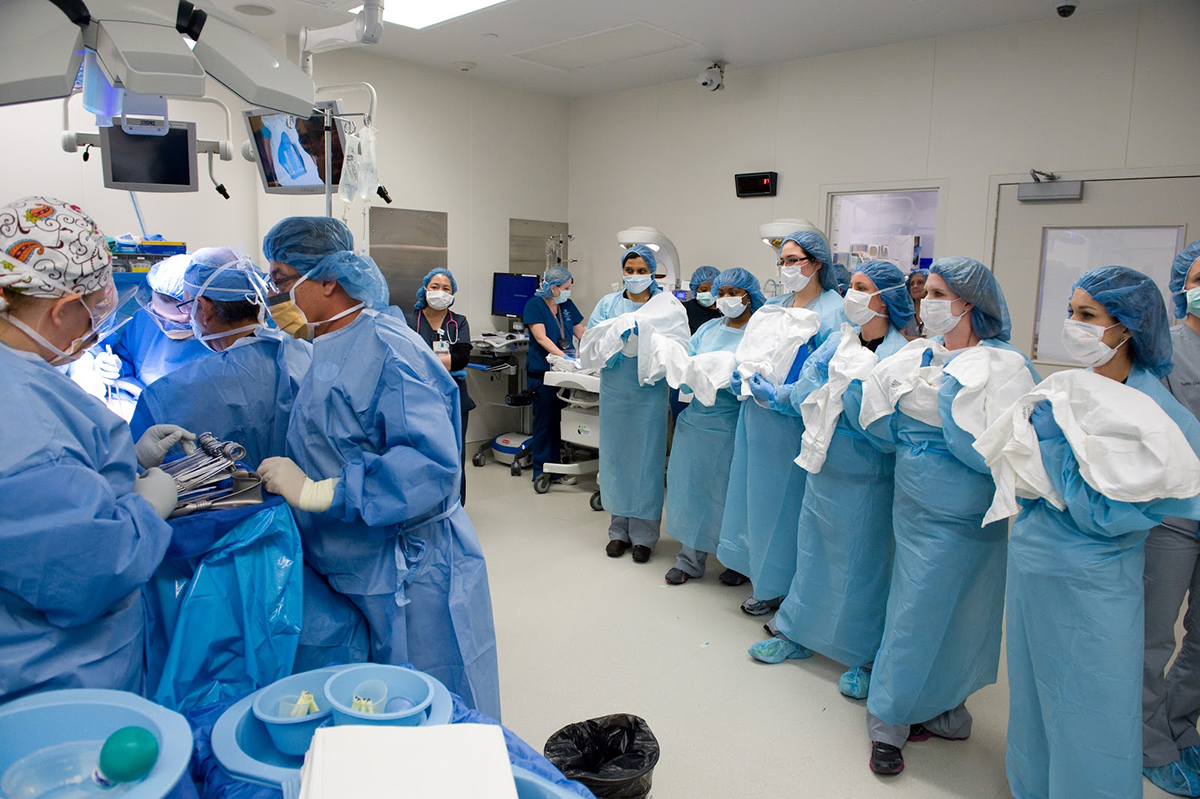
The Hospital Staff During Lauren’s Cesarean
Delivering Multiple Babies Can Be Risky
There are many potential risks associated with delivering multiple babies at once, let alone those born prematurely. These can include heart failure or poor blood supply in the infants, and this is part of the reason that each of the Perkins babies were taken immediately to the NICU upon being born. The staff were prepared well, and Lauren and David were reassured by their professionalism during this critical time.
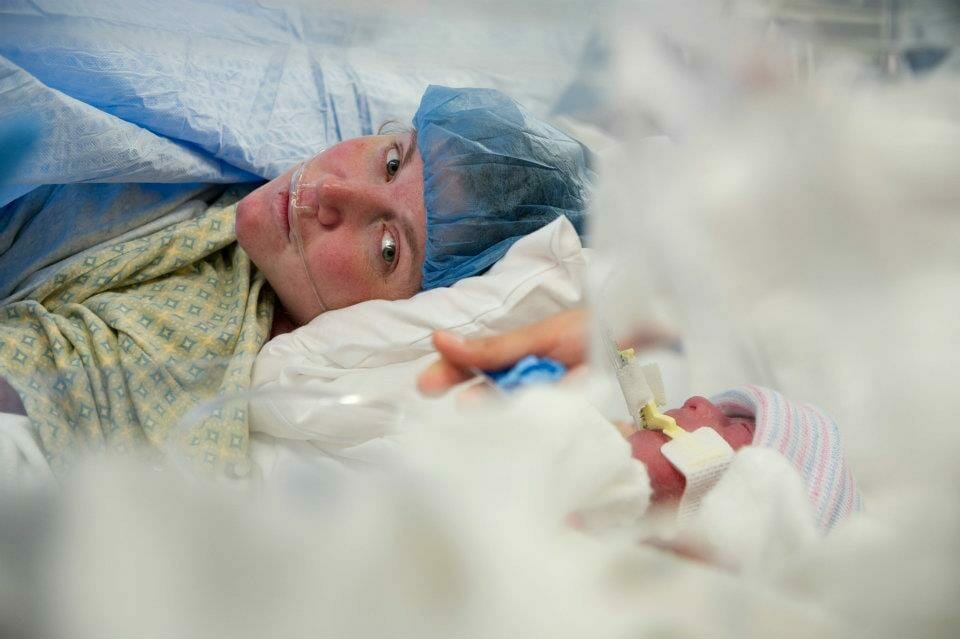
Lauren Perkins Looks Towards One Of Her Newborns
The Moment Was Still Precious
Despite the fact that Lauren and David Perkins were not able to hold their infants when they were first born, as they were not in a stable enough condition, the nurses made sure that they could touch the finger of each of the babies on their way to the NICU. Lauren and David had not expected to see their babies until the next day, so this was a very special surprise for them.
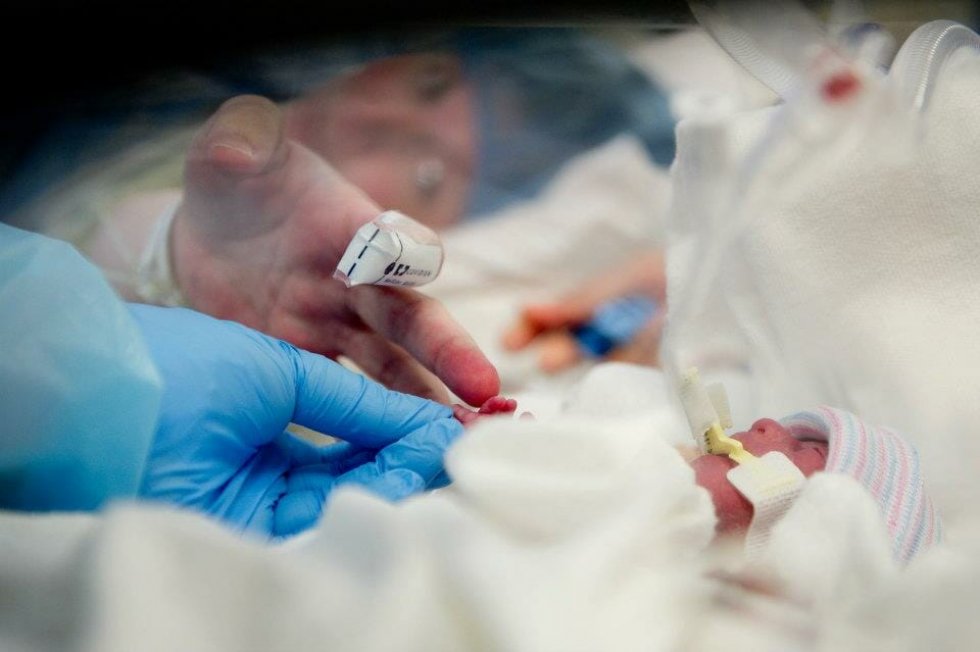
Lauren Perkins Touching The Finger Of One Of Her Newborns
The First Time Holding Them
While the Perkins sextuplets had to be rushed to the NICU immediately after being born, Allison Kate was stable enough to be held after four days there. It took 10 minutes for the nurse to adjust all the monitors and wires so that Lauren could hold her newborn, but Lauren describes this moment as when she first became the mother of sextuplets. She and David were also able to touch the hands of their other babies through the isolettes.
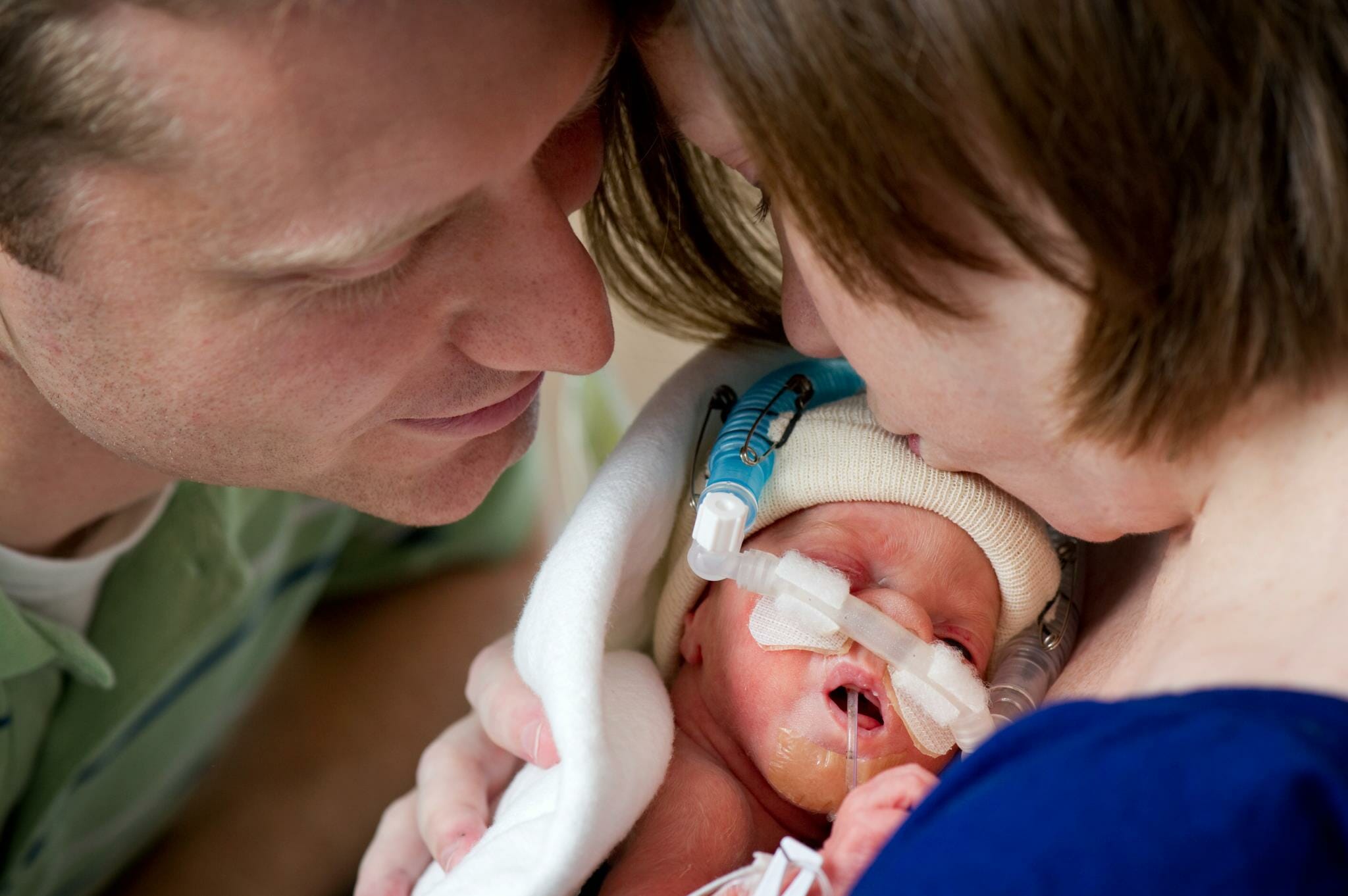
David And Lauren Perkins Holding One Of Their Newborns
A Tense Few Weeks Post-Delivery
The first few weeks after Lauren’s delivery were somewhat tense and stressful. It was during this time that the hospital staff had to focus on monitoring the newborns for any complications, as the first few weeks after birth are the period where complications can emerge that can cause disability or even death, especially in babies born prematurely. However, all of the Perkins sextuplets got stronger and healthier with every day that passed.
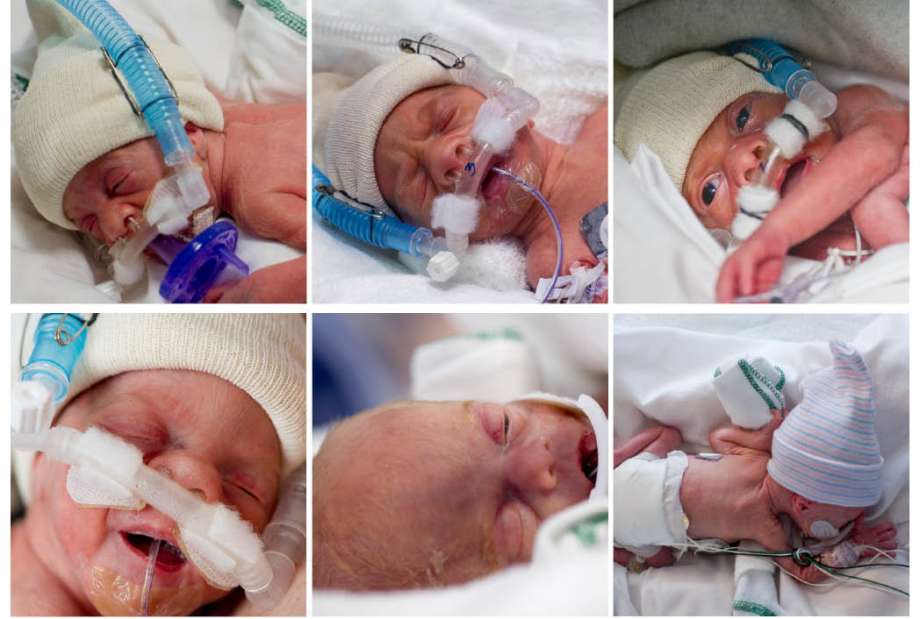
The Perkins Sextuplets In NICU
Premature Births Often Have Complications
There are a variety of potential complications that can occur with premature births. These can include low body temperature, difficulty breathing, a lack of adequate fat stores or even a lack of proper reflexes, which can mean the baby has challenges in feeding. Babies born prematurely and experiencing such complications will generally need to stay in the NICU with medical support and supervision, in order to give them a chance to develop more fully and reach a healthy weight before they can go home with their parents.
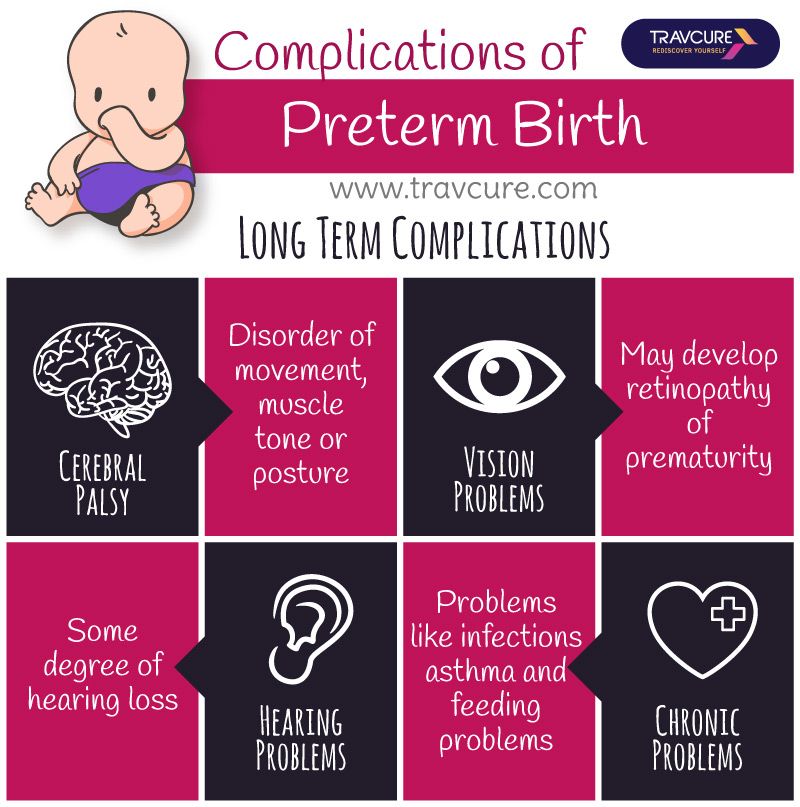
Complications Of Preterm Birth
Finally!
After approximately four months spent in the NICU, five of the six Perkins sextuplets were healthy enough to go home to their parents. Their arrivals were staggered, so Lauren and David had time to adjust to each of their children before another came home. Leah, who was the smallest of the sextuplets, had to spend a further few weeks in NICU, as she had not received the same amount of oxygen in the womb as her siblings.
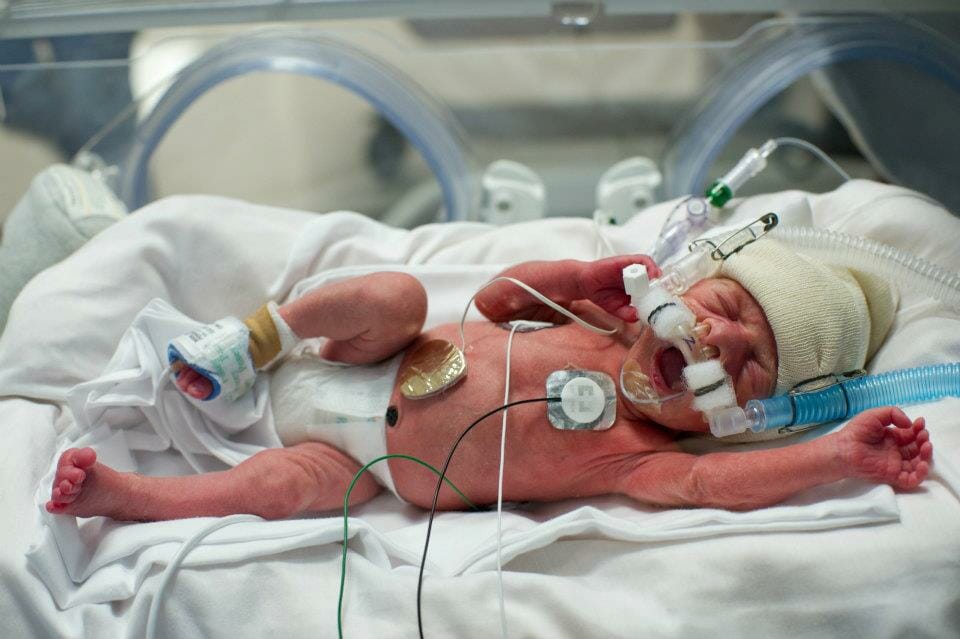
Leah In The NICU
What Is a NICU?
NICU stands for Neonatal Intensive Care Unit, and it is part of a hospital that is used to house and care for babies born prematurely, or with complications in some form. For a baby to be able to live without assistance, they need to be able to breathe air, their circulation must function properly, and their other organs must be functional. This is not always the case for babies born prematurely, or with some other complications.
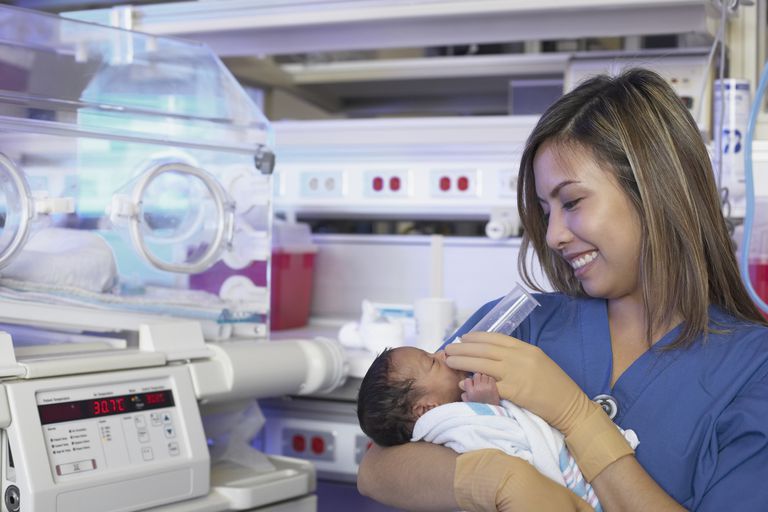
A Baby And Nurse In The NICU
How Can a NICU Help Babies?
The NICU exists to help newborn babies who need some medical support. NICUs are staffed by specially trained doctors and nurses who can help babies who need specialised nursing or support, or who need intensive care after they are born due to complications. NICU staff will generally have sophisticated and advanced technology and medicine at their disposal, in order to be able to help and support the babies that have to stay in the NICU for some reason.
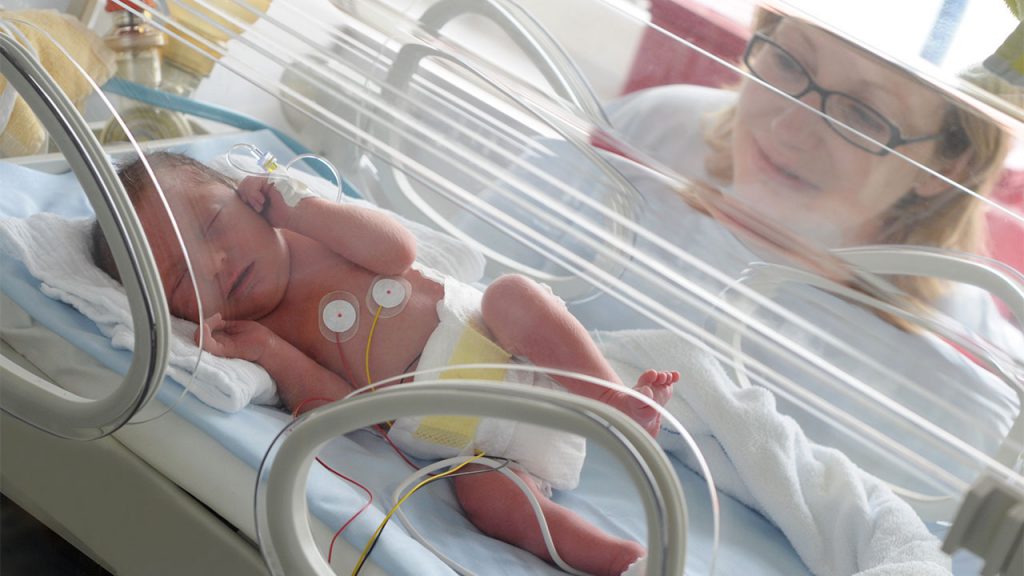
A Baby In The NICU
Which Babies Need to Be in the NICU?
Most babies that need to stay in the NICU are born prematurely. Any baby born before 37 weeks is considered premature. Babies that are born at a lower than average weight, or with many other complications will often also be held in the NICU until their complications have been addressed. Babies born as part of multiple pregnancies are often sent to the NICU, as they tend to have a lower birth weight than babies that are not part of multiple pregnancies.
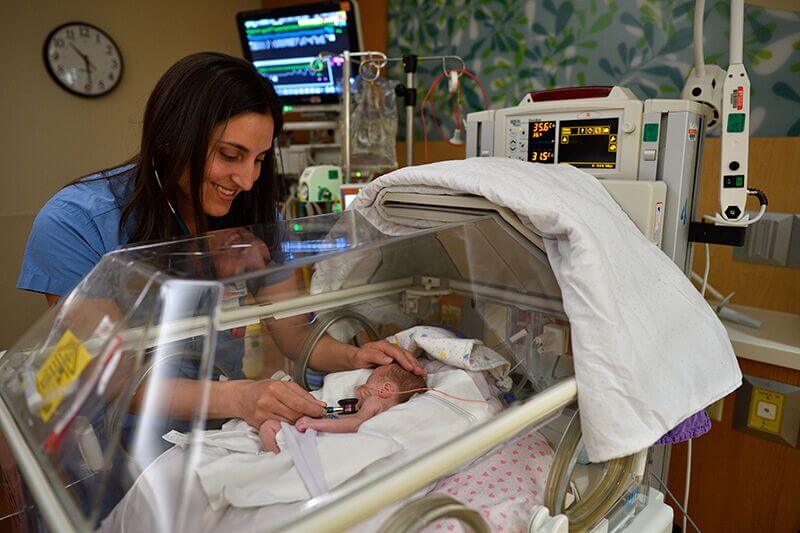
A Nurse With A Baby In The NICU
Some Maternal Factors That Can Mean a Baby Needs to Go to the NICU
There are several factors for the birth mother that can mean a baby needs to go to the NICU after birth. These will not guarantee that this is the case, as each baby will be assessed before being sent to the NICU, but can include being diabetic, younger than 16 or older than 40, using drugs or alcohol during the pregnancy, having too little or too much amniotic fluid, or having high blood pressure during the pregnancy.

A Pregnant Woman
Other Factors That Can Mean a Baby Needs to Go to the NICU
There are also a possible range of factors in the delivery of the baby or the baby’s development that can mean they need to go to the NICU after being born. These can include delivery position or a cesarean delivery, low blood sugar at birth, difficulty with breathing or needing extra oxygen and monitoring, or being born with certain infections, which can be very dangerous for newborns and require medication to treat properly.
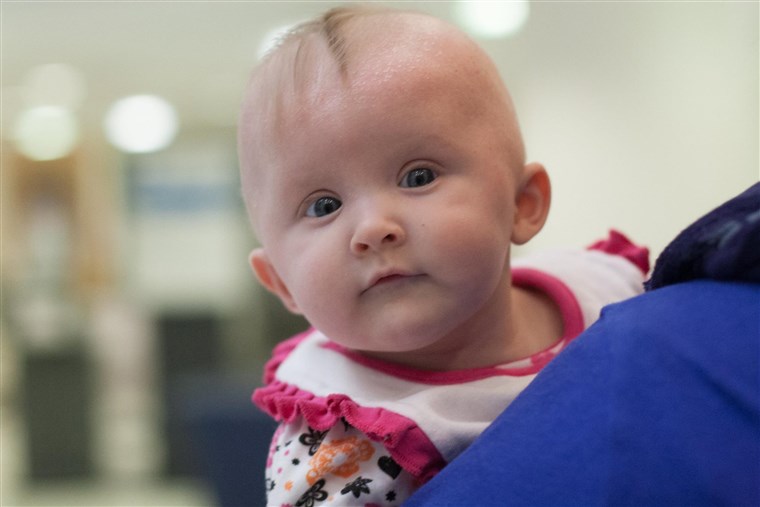
A Baby Being Held
Leah Developed Some Long-standing Complications
While she was able to go home to her parents, Leah developed some complications due to her positioning in the womb with her siblings. She needed additional support from medical staff in order to be able to be released from the NICU, as the nature of the pregnancy affected the growth of her brain. Fortunately, however, her disability is something that can be managed with support from her parents and family.
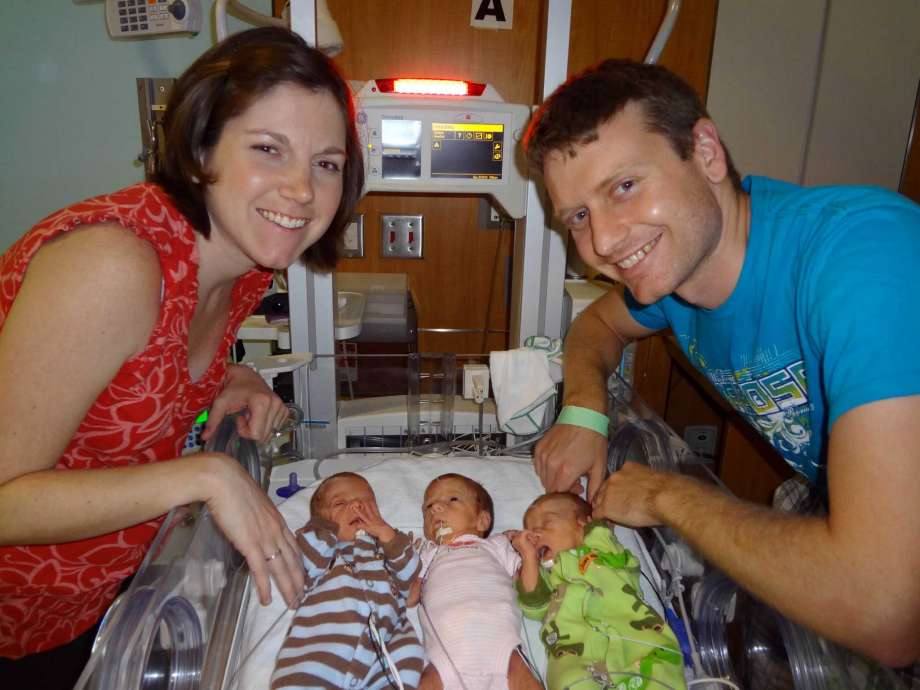
Lauren And David With Three Of Their Children
‘Controlled Chaos!’
Lauren has described how quickly and totally her and her husband’s lives changed once they finally had all their babies home, turning things into a state of “controlled chaos.” With a strong support system of friends and family around them, Lauren would prepare formula in advance for each of the children and leave it labeled in the fridge, so that their helpers knew which of the sextuplets it was for. Such organization would prove vital for properly taking care of the six infants.
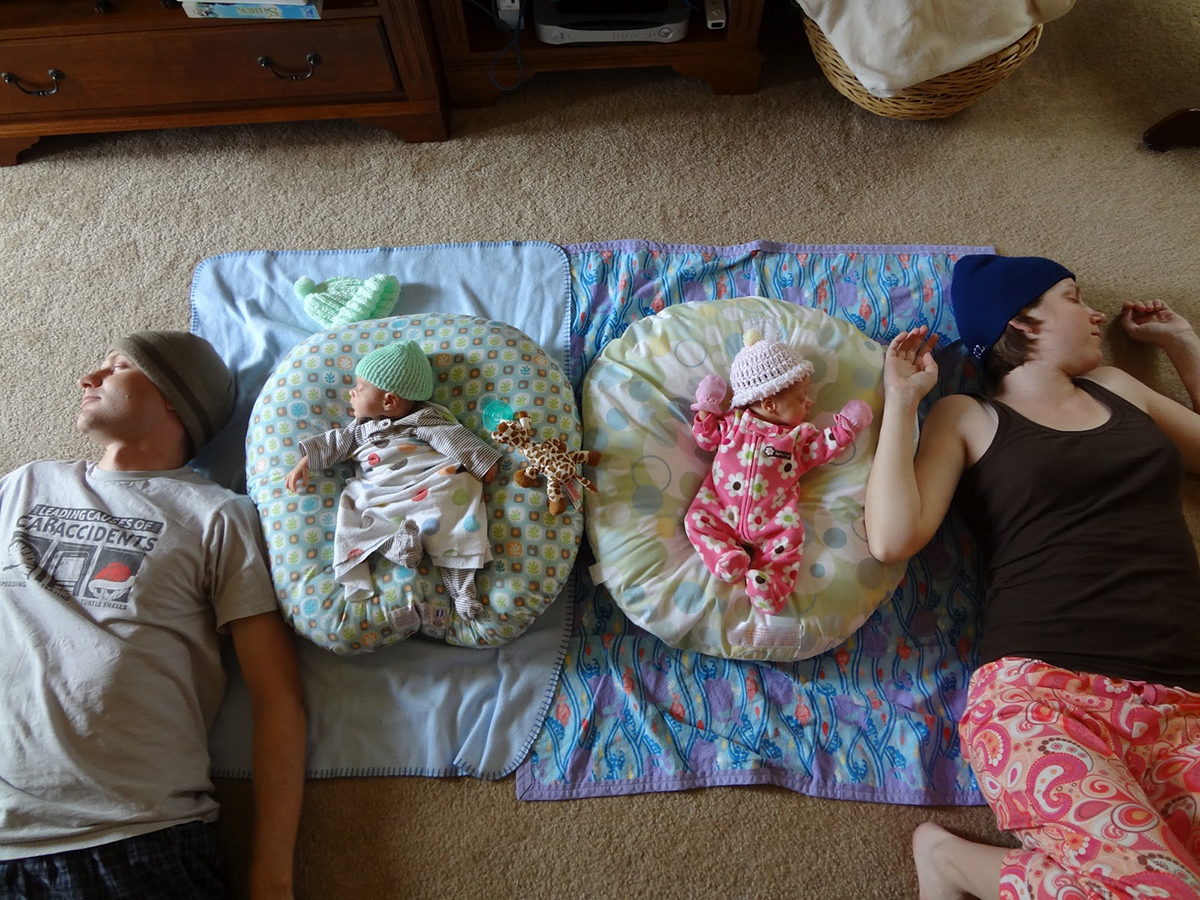
Lauren And David Sleeping With Some Of Their Children
Focus on the Positives
Talking to the Houston Chronicle about some of the challenges of beginning to raise her six children with her husband, Lauren stated that the key to maintaining a positive outlook was patience. She said that it was important to take things one day at a time, and to remember that this stage of one’s child’s life is temporary, and to make the most of it while it lasts, instead of getting caught up in the fatigue and frustration that can come along with it.
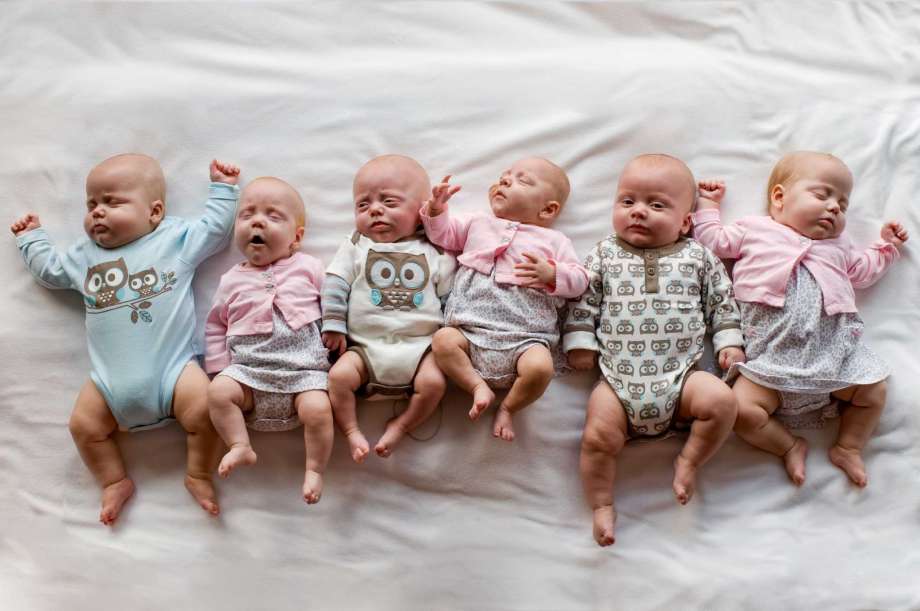
The Perkins Sextuplets First Group Photo
Like a Well-oiled Machine
Many of Lauren and David’s friends volunteered to help take care of the sextuplets, which was another huge help for the couple. Lauren also developed a system of shifts, where their friends could come to help feed and bathe the infants during the night, or bring dinner to Lauren and David, so that they didn’t have to worry about prepare food for themselves as well as for their children.
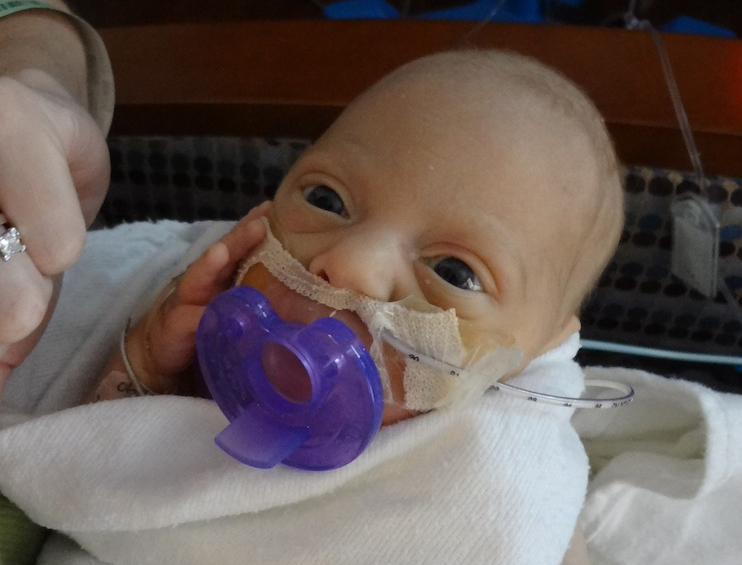
Leah As An Infant
All the Essentials
Not only did they help out with tasks around the house, but the volunteers also donated supplies to the Perkins family when possible. Formula milk, which is very expensive, was donated, as were second-hand clothes, and diapers. Lauren also describes having tried to limit the number of nappy changes they went through, in order to conserve their stock of diapers. Ultimately, the Perkins family did not actually have to purchase any diapers for the first two years of their newborns’ lives.
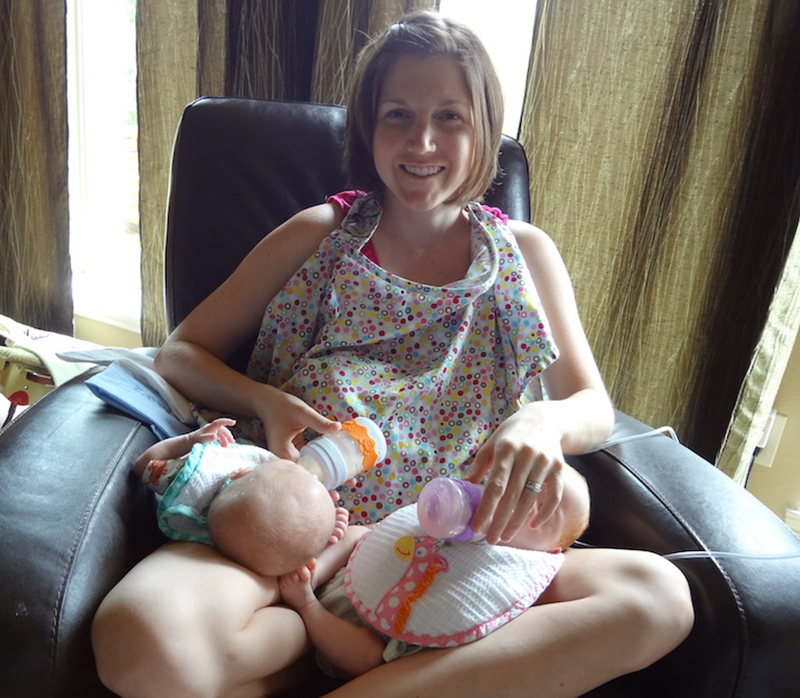
Lauren Feeding Two Of Her Babies
Baby Steps
As the sextuplets grew, so did their needs and challenges. Eventually, they began to reach their milestones, and Lauren describes trying to potty-train them as being a ‘complete nightmare.’ It doesn’t take much imagination to see how it would be a bit of a struggle to try to potty-train six infants at once- especially at the same time! However, as with all the other challenges that came before them, the Perkins were able to overcome this hurdle as a family.
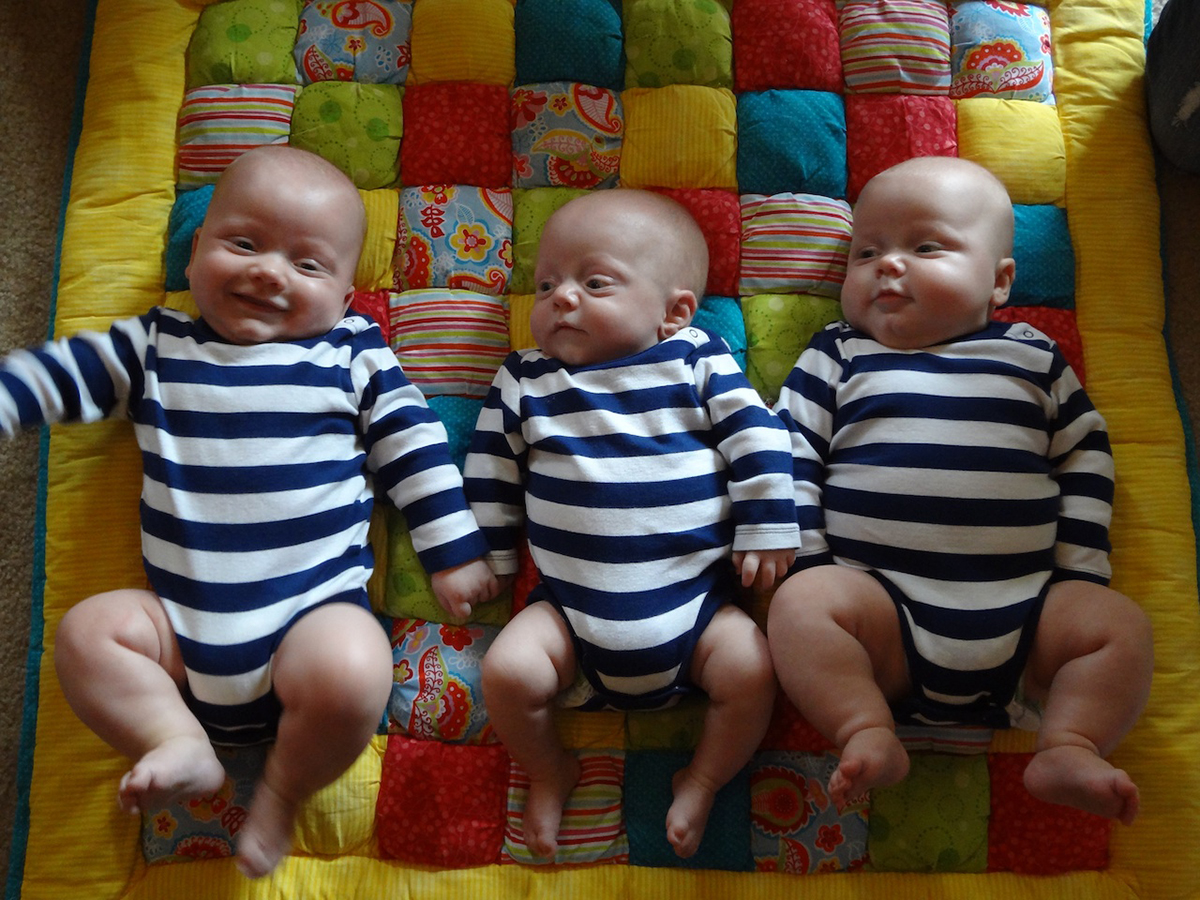
Three Of The Perkins Babies
Another Milestone Crossed
Before too long, the Perkins sextuplets celebrated their first birthday all together. As with the other activities they took part in together, it’s not difficult to imagine that hosting a first birthday party for sextuplets could be something of a logistical challenge, but Lauren and David managed, and the family looked to have had a lovely time celebrating this incredible milestone together. It definitely made for a great picture, at least!
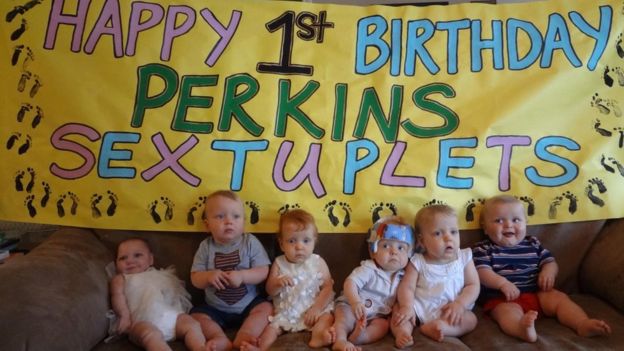
The Perkins Sextuplets On Their First Birthday
Taking Time When One Can
There were, naturally, times when Lauren needed to take a few moments from taking care of the children if she was home by herself. In order to accommodate this, she and David constructed a giant playpen out of smaller baby gates, which they placed in their living room. It took up much of the space, but the sextuplets were happy in there, being able to play with their toys and their siblings.
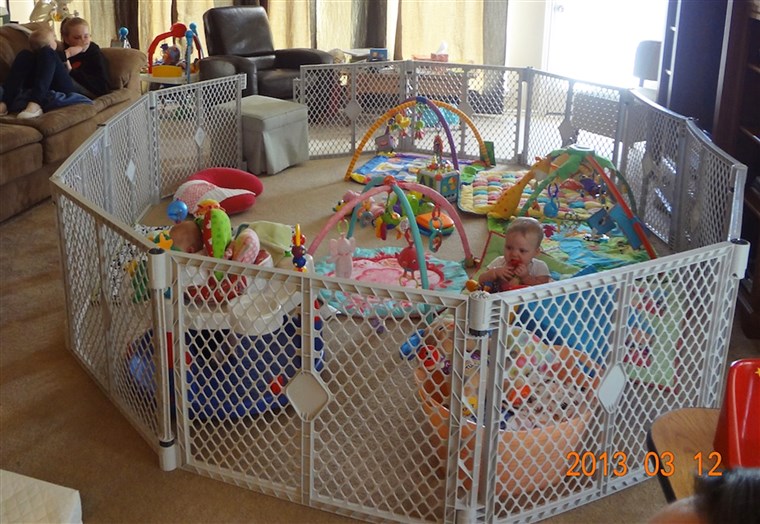
The Perkins Sextuplets Playpen
Growing up, Slowly but Surely
As they grew up, Lauren and David were able to rely less and less on their support network. Eventually, they were independent enough that Lauren and David largely needed help in order to have some time to themselves, or to attend nights out with their local church group. Otherwise, for the most part, the family have developed a structure and routine to their lives that is second nature to follow.
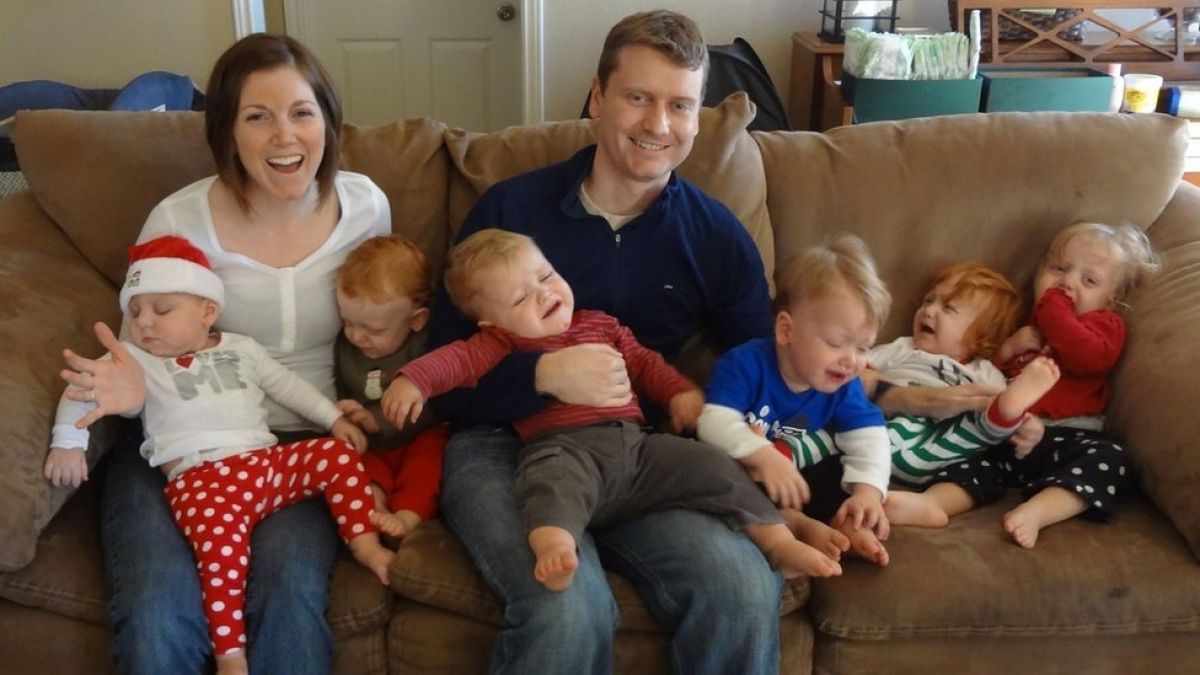
The Perkins Family On The Couch Together
Starting Kindergarten
Eventually, the Perkins sextuplets were able to start kindergarten. There were still concerns about Leah’s development at this stage, but she was able to begin attending a kindergarten for students with special needs at the same time that her siblings began their schooling. By this stage, the Perkins children were beginning to grow into their own individuals, and David and Lauren had begun using majority votes as a way to make decisions and learn about taking in turns.

The Perkins Children
Turning into Their Own People
As is often the case around the time that children reach school age, the Perkins sextuplets began to start developing into individuals, each with their own interests and hobbies. Some of these include superheroes, princesses, watching TV, arts and crafts and playing outside. Lauren has noted that, due to their unusual family structure and dynamic, the children had to mature and become more independent at an earlier age than they may have otherwise, in order to help keep things running smoothly in the household.

The Perkins Kids Holding Their Baby Photos
Meeting Their Milestones
The Perkins sextuplets were closely followed by their pediatrician, Dr Margarita Jimenez, from the Houston Children’s Hospital. According to the doctor, by age 5, 5 of the 6 had reached the developmental milestones of any child not born prematurely. They had required speech therapy until the age of 4, but subsequently caught up. Dr Jimenez remarked on how well-adjusted the Perkins children were, being very down-to-earth and living a fairly normal life, despite their extraordinary circumstances.

The Perkins Sextuplets, By A Van
Leah’s Future Looks Bright, Too
Despite her somewhat different, and perhaps more challenging outlook, Dr Jimenez was not concerned about Leah’s potential to live a happy and fulfilling life. Dr Jimenez noted the closeness of the bond between the Perkins sextuplets, and stated that Leah had five siblings who would always look out for her, and that she was included in all the family’s activities and plans, like going on hikes in Colorado, or to the beach and on swings and slides.
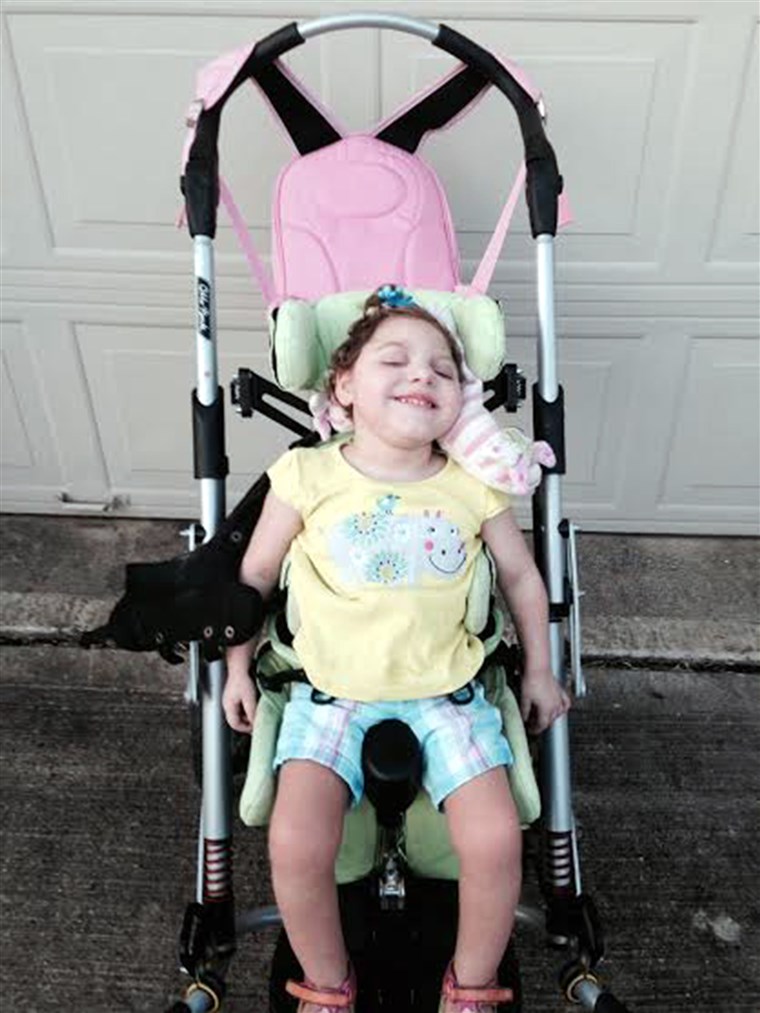
Leah In A Stroller
A Bunch of Characters
By the time they had reached preschool, each of the Perkins sextuplets had begun to develop a distinct personality of their own. Andrew Noah, the tallest of the Perkins, is the most outgoing and likely to test himself. Benjamin Luke is the most curious, is interested in many different things and is able to talk himself out of getting into trouble. Caroline Grace can be a bit dramatic, and is able to do many different things.
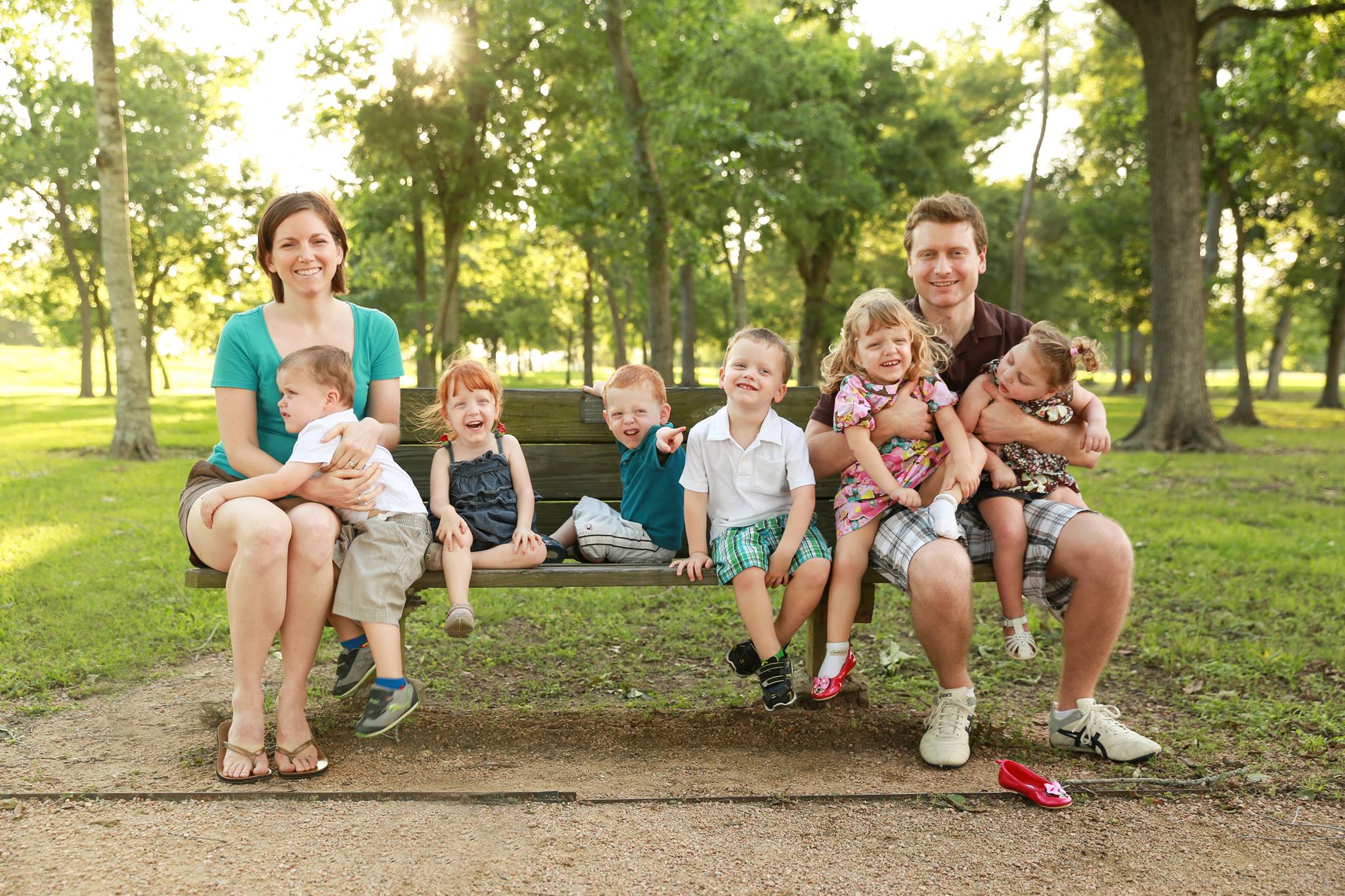
The Perkins Family At The Park
A Bunch of Characters, Part Two
Alison Kate is known to her family as “little mommy;” despite being the smallest of all her siblings, she also likes to be in charge of them. Levi Thomas is a goofball, who loves music and enjoys entertaining his siblings and family. Leah Michelle is still in speech development classes, but is the hardest working of them all, with a smile that lights up her face. The kids all enjoy music, playing outside and helping their mom cook.

Leah Perkins Smiling
Growing up Can Be Bittersweet
Now, the Perkins sextuplets are almost aged 7, and are nearly ready to start school. For Lauren, this has been something of a bittersweet process. She says she has gone through the ‘normal stages of parenthood,’ and that this has been more intense, as it is happening with six children simultaneously. She notes that it is both exciting and a bit sad to know that her children are getting older, and that the moments she is sharing with them can’t be replicated.
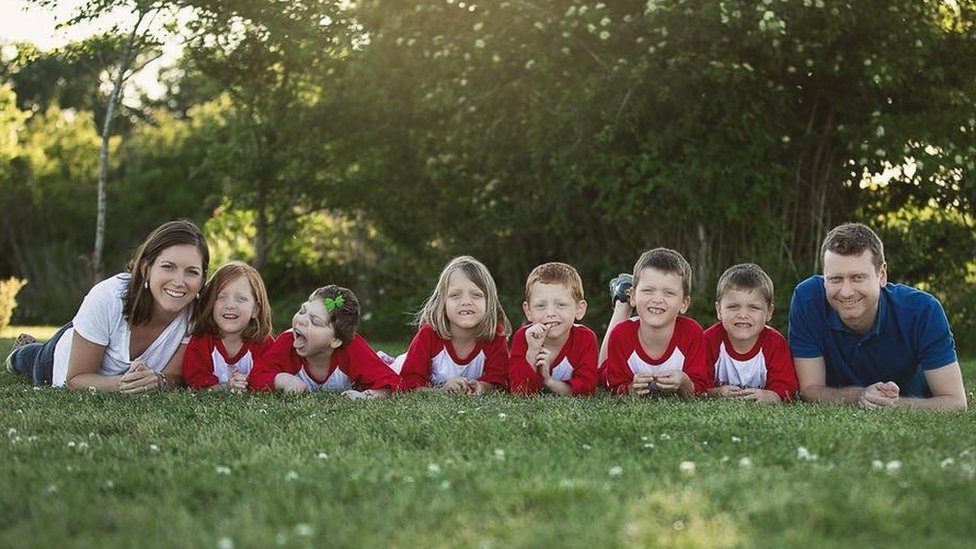
The Perkins Family On The Grass Together
It Hasn’t Always Been Easy
Lauren says that part of her is in disbelief that she and her husband have been able to make it to this stage of their children’s development with no major hiccups. She remembers thinking, while they were infants, that if they were able to make it to the point where the children were potty-trained and no longer needed bottles and diapers, that the family would be more or less in the clear.

The Perkins Family All Together
‘Very Grateful’
When Lauren describes her feelings now about her family and having sextuplets, she describes feeling ‘very grateful,’ having despaired for a while at potentially not being able to have children at all, let alone 6. She notes that, while not every day has been fun, it’s been a generally positive experience, and that her children have grown into fairly independent young people, who are well-behaved and like to have fun with their siblings and parents.
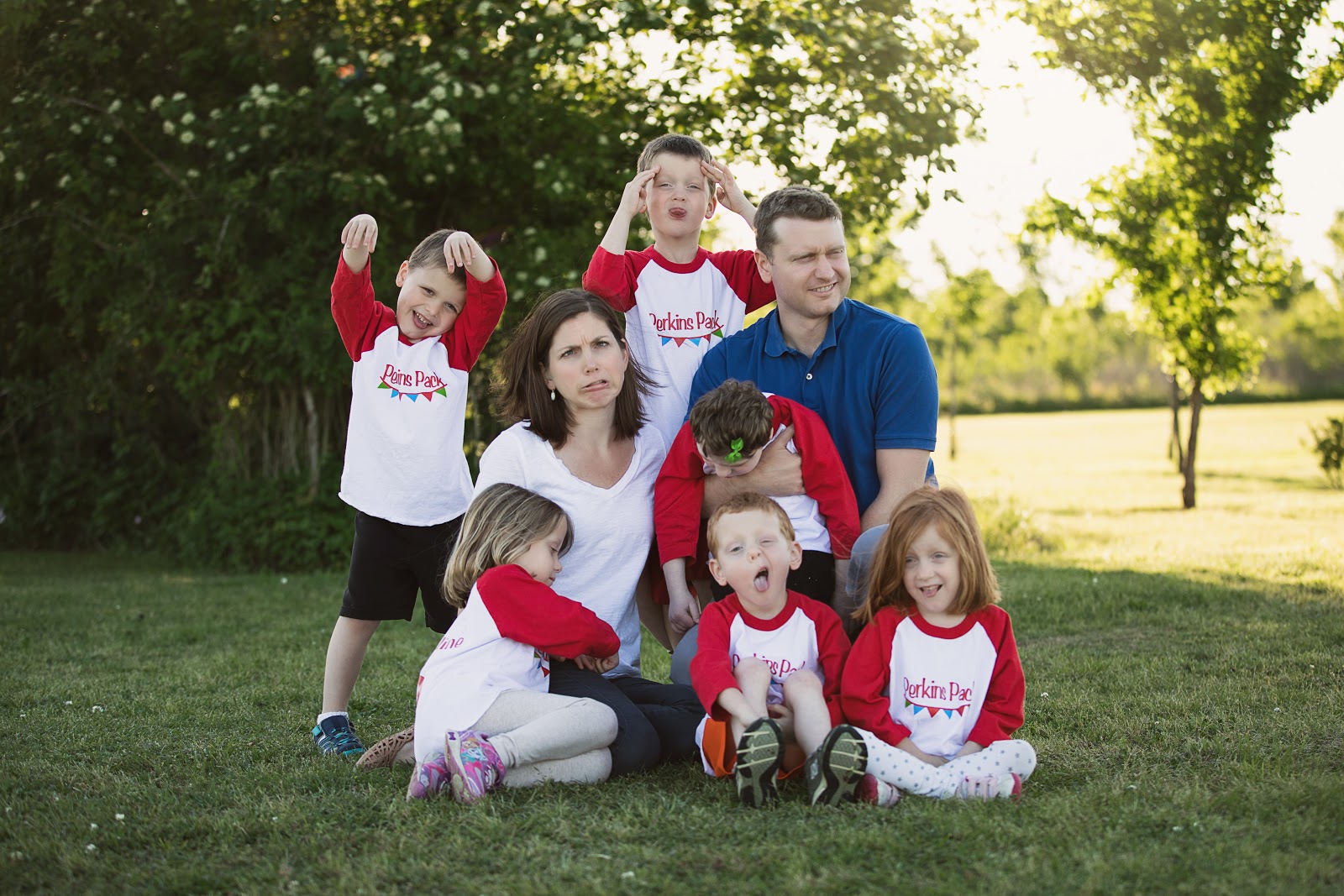
The Perkins Family Together


